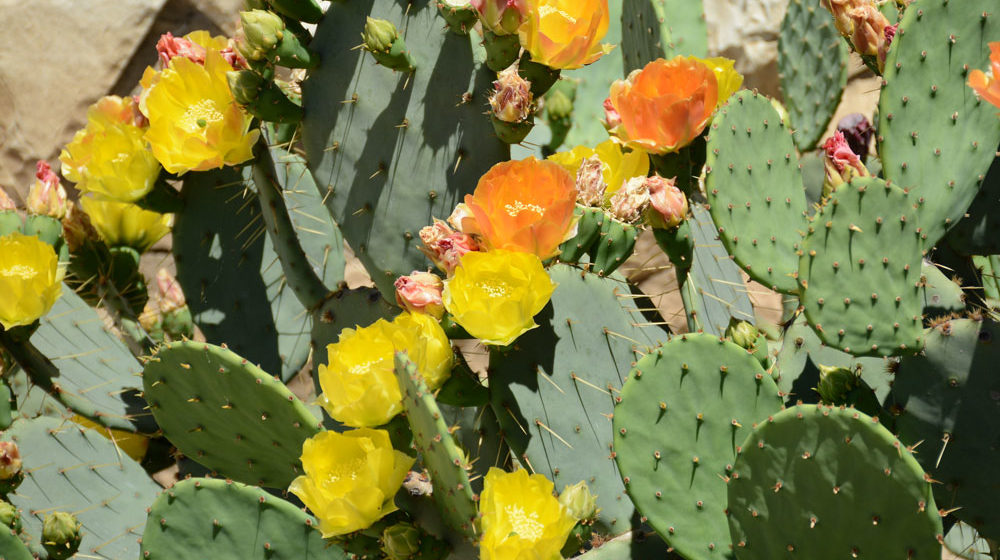The prickly pear cactus (Opuntia spp.) is from the cactaceae family and is native to Florida and the deserts of the American Southwest. Although they look like they only belong in the deserts, there is a variety that loves the sandy shores of our island beaches. They are highly drought tolerant of course, but also have developed a good salt tolerance as well. There are many varieties of prickly pear cactus, but the one that you see on our islands may range in height from 1 foot to several feet tall. They form clumps or shrub-like mounds and have a very course texture. The actual leaves of this cactus are unnoticeable, it’s the plate-like stems of the plant that are often thought of as the leaves. These sections are the fleshy plates that reach a length of 2 to 6 inches, are green and covered with 3 inch long spines, so watch your step.
The prickly pear cactus mainly blooms in the summer with flowers ranging in color from orange, red and purple to white. It will bloom over a period of several weeks, but the individual flowers will only last for 1 day. The fruit of the cactus is oval in shape and about 1 to 3 inches long, fleshy and purple in color. This plant grows well in full sun.
The best part of having this prickly pear cactus in your yard or along your beach is the gopher tortoises! They love to eat the flowers, fruit and even the spiny plates of this plant. It is a favorite in their diet. You have to wonder how they manage to eat something so prickly. Gopher tortoises don’t have teeth, but they do have a beak to break off foliage and food. They also get their water from the plants they eat and that may be why they are willing to brave the stickers for some prickly pear cactus.
This column is a joint effort by all at In The Garden, a Sanibel garden center located at 3889 Sanibel Captiva Road, Sanibel, Florida, 33957.
